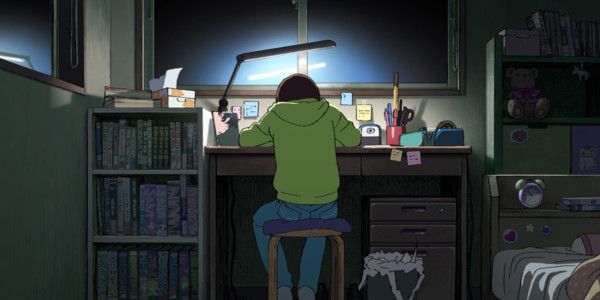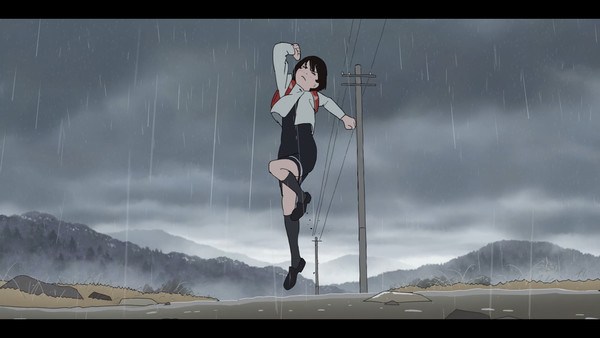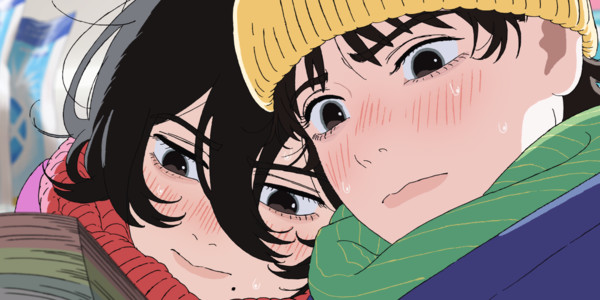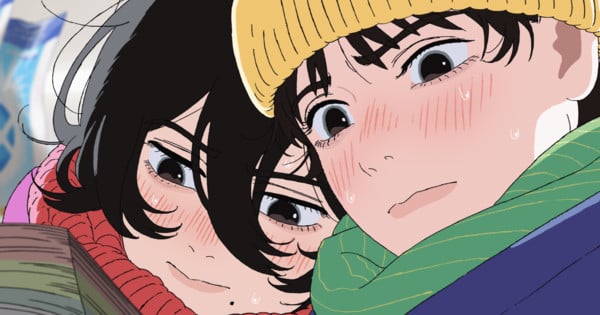Curated From www.animenewsnetwork.com Check Them Out For More Content.
ANN’s coverage of Anime Expo 2024 sponsored by Yen Press and Ize Press!
Kiyotaka Oshiyama and Studio Durian might not be immediately familiar to average anime fans, but the team’s latest outing is worthy of attention. The small studio team’s previous work centers mostly on designs for series like Deca-Dence and FLCL: Shoegaze, although they recently expanded out to assist on Hayao Miyazaki‘s Oscar-winning film The Boy and the Heron. Oshiyama and his Flip Flappers anime alumni look to have their own hit on their hands with Look Back, the anime adaptation of fan-favorite creator Tatsuki Fujimoto‘s one-volume manga. At just under an hour in length, the film has garnered financial success at the Japanese box office, topping 1 billion yen (about US$6 million) in ticket sales.

©TATSUKI FUJIMOTO/SHUEISHA ©2024 Look Back Film Partners
The film follows the story of two girls, Kyōmoto and Fujino, and their joint artistic pursuits after they connect over a mutual love of manga. What begins as a hobby turns into a possible career path, but not without dedication and hard work. In our interview with Oshiyama, he shared how the protagonists’ commitment to their craft mirrors his own and what scene he’s most satisfied with.
After your extensive time working in the anime industry, can you tell us about how you decided to form Studio Durian? What are your studio’s goals and aspirations?
Kiyotaka Oshiyama: I directed this original TV series called Flip Flappers, and I forged friendships on that creative team as the director, but when the project was done, the team was disbanded. So then, when it came time, we were like, “Hey, let’s make something else.” It’s hard to reassemble the same team. And all of the experience and know-how gained [through that production] gets reset. That just seemed wrong to me.
And then for me, when I’m really broadly engrossing myself in a particular title, and as a director who just completely immerses themselves in making something, or at least that’s what I’ve learned about myself after going through the experience, I realized that if I don’t have my own studio, if I don’t become an owner, it just won’t work out.
So I just felt like if I’m going to put in my own time into a work, it’s better to set up my own team, my own studio. That’s basically what led me to that decision.
As we’ve steadily transitioned into an era where we can create animation digitally, rather than how it was before, where a large team would be working on an anime, I think we’re going to eventually find ourselves in an era where you can create anime with smaller teams of people. That’s my prediction. So, working backward from that, we want to be able to make things in that new environment. I felt that’s all the more reason to have my own team. That was a big factor, too.
How did the initial plan to adapt Fujimoto-sensei’s manga Look Back come about? Were you already a fan of the story?
OSHIYAMA: The catalyst was when I was working on the demon designs for Fujimoto-san’s manga, Chainsaw Man. Of course, I was also reading the manga, too.
Then, when Look Back was announced, I read it right away. It’s not like I had the notion right then and there to make it into something animated. But Avex approached me about making an animation out of it, and from my end, to be honest, when I read it, I felt like an animated adaptation would be a tall order. That was my impression. But as I thought about it more and more, and about working with our small team and our production style, and the content of the original work itself, it just felt like, “Wait; actually, this is maybe a good match, though?” So, even though I thought animating it would be difficult, I decided to go for it.
Speaking of putting the team together, Fujimoto-sensei commented on social media that he was very impressed with your abilities and that you provided most of the key animation yourself. Are there any scenes you’re particularly happy with?
OSHIYAMA: Since it’s always a race against the clock to finish, there are various parts where I’m not really satisfied with how it turned out, but for parts that I think are good, that audiences had a good response to, I think would be the part where the main character, Fujino, is happily skipping in the rain. I animated that, so it’s a scene that is strong in my memory.

©TATSUKI FUJIMOTO/SHUEISHA ©2024 Look Back Film Partners
Was it stressful at all to personally provide so much of the key art while managing the director tasks at the same time?
OSHIYAMA: When you’re doing the work of creating something, no matter what it is, you’re going to feel stress to varying degrees. I think just living life, you’re gonna be affected by stress in some way, and this is no different. But compared to when you’ve got a big group of people, and you have to consider everyone’s opinions, it’s far less stressful. For me, it’s easier to work this way.
I’ve had experiences where I’d be working with a big team on something for a long time, and in that setting, the thing you want to convey doesn’t get across. So, working on smaller teams with people who are trusted companions, I’m trying to take things in a direction that will reduce stress in that way, so that’s the position I am in now.
As the director, what do you feel are the primary themes of the Look Back film? What do you want to convey to the audience?
OSHIYAMA: I don’t really want to convey any explicit message with the film. There are some things I made up my mind about when I approached it though, and one of those is showing the act of putting in the effort of creating something and that struggle of being a creator.
In Japan you hear a lot of people saying lately that it’s uncool to be working hard on something.
But the people working in the animation industry creating things, and I’m sure the same is true for those in the manga world, this idea of not working hard or not putting in effort is just so detached from anything. I guess you could say, on some level, it’s meant to be an affirmation for creators like us, but it can apply to anything where you’re putting in the work to do something. So, my hope is that by showing characters pouring themselves into working hard to create something, people will appreciate that hard work is still meaningful.

©TATSUKI FUJIMOTO/SHUEISHA ©2024 Look Back Film Partners
You can really see that with both characters. One of the main characters spends all of her time trying to get better at drawing, while the other one kind of isolates herself in her room. Is that where that idea comes from?
OSHIYAMA: Yes. Considering the personality of Fujino, the main character, she doesn’t like other people seeing her putting in effort, like she boasted how she drew a manga in five minutes. But in reality, she spent a lot of time trying her hardest to draw it by herself in her room. So, she’s the type of character who is putting in the necessary work behind the scenes. So after that, as a result of that hard work, she was able to debut as a professional manga artist, which is connected to social success.
The original manga doesn’t really show scenes depicting Fujino working hard, so that’s unique to the anime. So, we wanted to take that theme of hard work and effort beyond how it was shown in the original work.
What parts of the film do you feel accurately represent the emotional difficulties of being a creator?
OSHIYAMA: It’s the scenes of the main character hunkered down over a desk, with time passing as she’s working hard. You see Fujino maintaining the same position, trying her best to get good at drawing, with the scenery outside the window changing and the sketchbooks and reference drawings stacking up beside her. Through these kinds of visuals, I wanted to depict the sheer amount of work involved that she was committed to.
At any point, did you find yourself sympathizing more with Fujino or Kyomoto as the story progressed?
OSHIYAMA: Me personally? Both of them, really. I think Fujino and Kyomoto are both reflected in me. I have aspects of Fujino, like wanting to show off, feeling controlled by my own self-consciousness, or a drive to be a true creator and improve myself, those kinds of pure emotions about the creative process.
Look Back opened in theaters in Japan on June 28. It screened at Anime Expo in Los Angeles on July 6 and at Japan Society’s Japan Cuts: Festival in New York City on July 17.
Translation provided by Earl Gertwagen.
